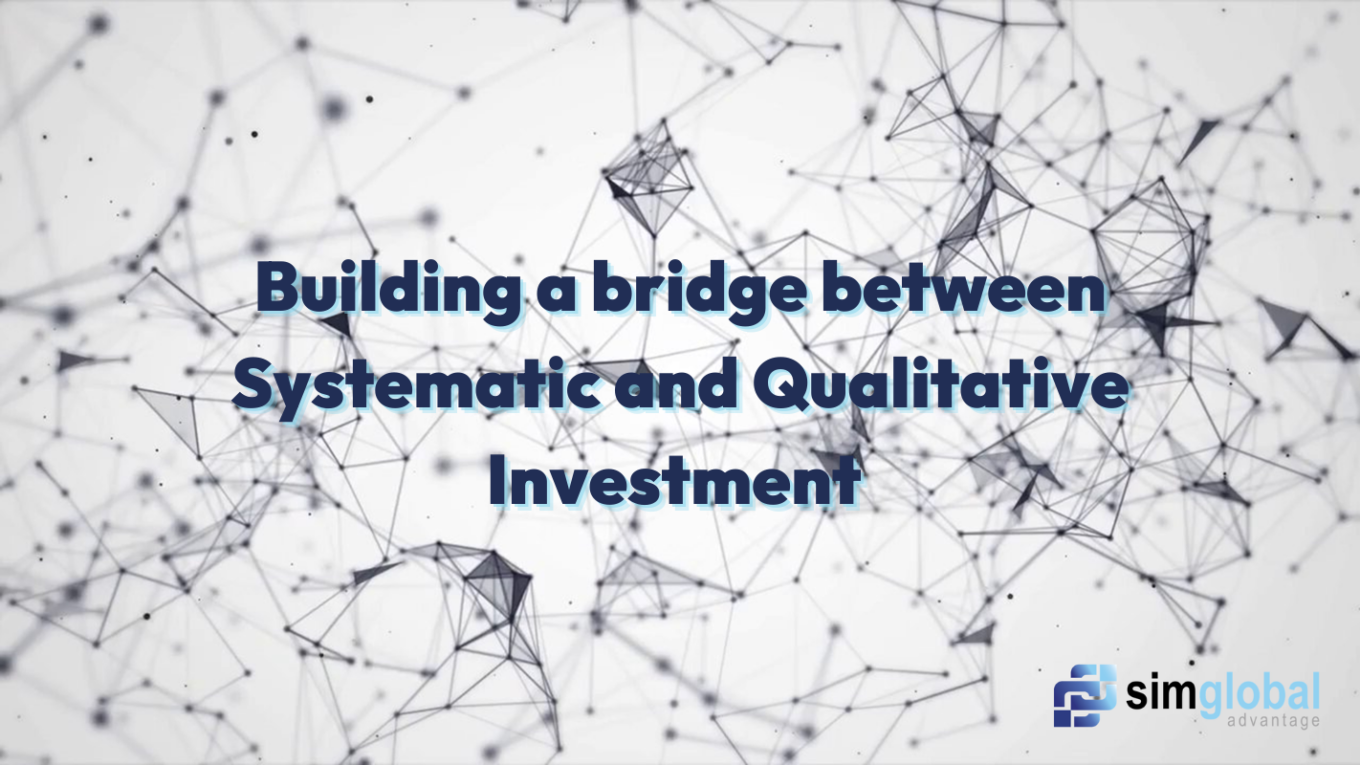A notable development in the investment landscape is the increasing adoption of a systematic or pure rule-based approach to investment, such as smart beta or factor-based strategies. Systematic investment, also known as quantitative investment, attempts to seek profitable trading rules or algorithms if applied consistently to financial markets. Conversely, discretionary investment management or a qualitative investment approach relies solely on the ability of individual portfolio managers to make profitable trading decisions.
The two concepts do not need to be entirely at odds. Discretionary portfolio managers can greatly benefit from integrating elements of a systematic investment approach into their workflow.
- Psychological bias mitigation: Fear and hope drive investment errors. The field of behavioural finance is now well-established, and there is a significant amount of evidence that shows it is challenging for a discretionary portfolio manager to make reliable investment decisions consistently, and these biases present opportunities for systematic investment to impact performance positively.
- Scalability: Because a systematic process can be automated and replicated, investment
strategies of the same kind are far better suited when scaled in time and space. For example, expanding a portfolio from 100 to 1000 stocks or replicating a process from one market to another become simple tasks. - Risk monitoring and control: A systematic approach has the advantage of employing various risk metrics, such as realised volatility, to evaluate and manage risk. Systematic investment also allows threshold values for target volatility to be set and exposure to specific risks more effectively monitored.
- Objectivity: A systematic investment process relies on scientific methodology – performance can be statistically evaluated and compared in a predictable manner, which is different from the ad hoc approach that a discretionary portfolio manager would take.
- Ability to systematically evaluate trading ideas: Historical simulations, also known as “backtests”, provide discretionary portfolio managers with the means to assess the performance of their trading ideas. If done right, the backtest can give an insight into the performance of the systematic trading ideas the manager executes. By analysing the results, successful ideas can be reinforced and less favourable ones discarded, thereby continuously improving the portfolio manager’s overall performance.
Incorporating elements of a systematic investment process into discretionary portfolio management can enhance decision-making, mitigate biases, and improve risk management, ultimately benefiting qualitative-style managers. Those elements should be seen as supporting tools for the discretionary portfolio manager and not as a form of replacement. They can be very targeted to a specific step and need to span only some of the investment process; small steps can already make a significant impact. Based on client experience, the following areas have proven to be most effective in harnessing the value of quantitative analysis when integrated into a qualitative investment approach:
- Identifying information sources for the decision-making process: We call that “quantification of the information”. In a nutshell, the idea is to translate a qualitative method of processing information into quantifiable variables. Once the information is quantifiable, it opens the door to applying meaningful data processing to extract different types of information and provide a visualisation, which the portfolio manager can then use to support his decision. The advantage is that information is sourced and processed consistently without bias and can be further utilised to analyse the decision-making process.
- Tracking investment decisions: If investment decisions such as instrument selection, weight allocations or triggers for selection are not tracked and stored, it isn’t easy to ensure appropriate portfolio monitoring and analyse those decisions retrospectively. Such analysis is precious as it can lead to identifying bias in the portfolio’s construction or the information used to construct the portfolio. A proper risk management framework also relies on investment decisions being systematically tracked.
- Analysis of investment decisions: If steps one and two are in place, investment decisions can be analysed and simulated to identify and understand how the performance is generated. Such analysis can range from a simple risk budget utilisation to a more complex factor exposure analysis. Once in place, it will empower the discretionary portfolio manager with valuable insights, which can be used to validate or improve his investment approach. Historical simulation or “backtesting” can also verify how ideas or strategies have performed in past periods or different universes. The consistency and robustness of a strategy’s performance over different universes and periods are potent tools for assessing its success.
Often, quantitative analysis is regarded as a threat to discretionary portfolio managers. It should be seen as a supportive tool that can be used to improve robustness, reduce complexity, and limit bias in the decision-making process. The decision remains with the portfolio manager but is simplified and better informed, leading to a more consistent performance in the long run.
References:
Giamouridis, Daniel. “Systematic investment strategies.” Financial Analysts Journal 73.4 (2017): 10-14.
Harvey, Campbell R. “Why Is Systematic Investing Important?. ” Journal of Systematic Investing (2021).
The Hedgefund Journal (2017). “Advantages of Systematic Investing”. Retrieved on 14th of June 2023: https://thehedgefundjournal.com/advantages-of-systematic-investing/
Bio
SIM Global Advantage grew out of a consulting practice in 2005 and has specialized itself since then as a provider of products and services for asset managers. Today, SIM Global Advantage helps clients develop cutting-edge quantitative finance methods and design unique software to elevate every step of the investment process to the next level. The company boasts a thorough knowledge of traditional and alternative market data and leverages state-of-the-art methodologies such as AI, machine learning, and advanced statistical models. The company’s distinctive position has allowed it to assist a diversified client base attain superior return-to-risk profiles with multiple sources of alpha generation.
